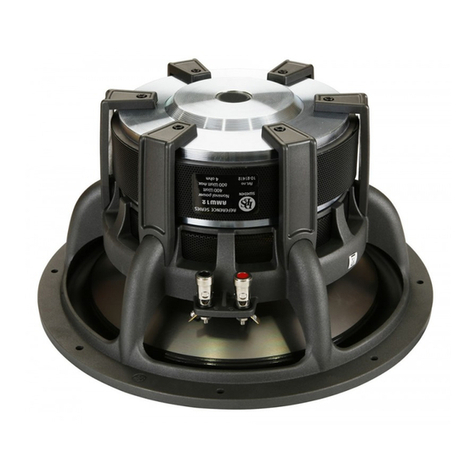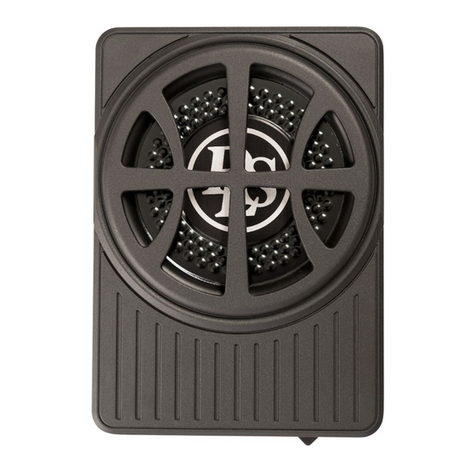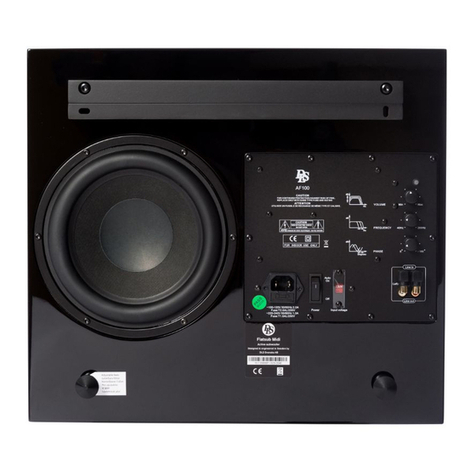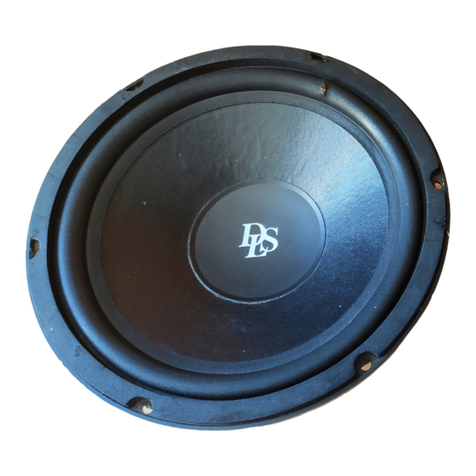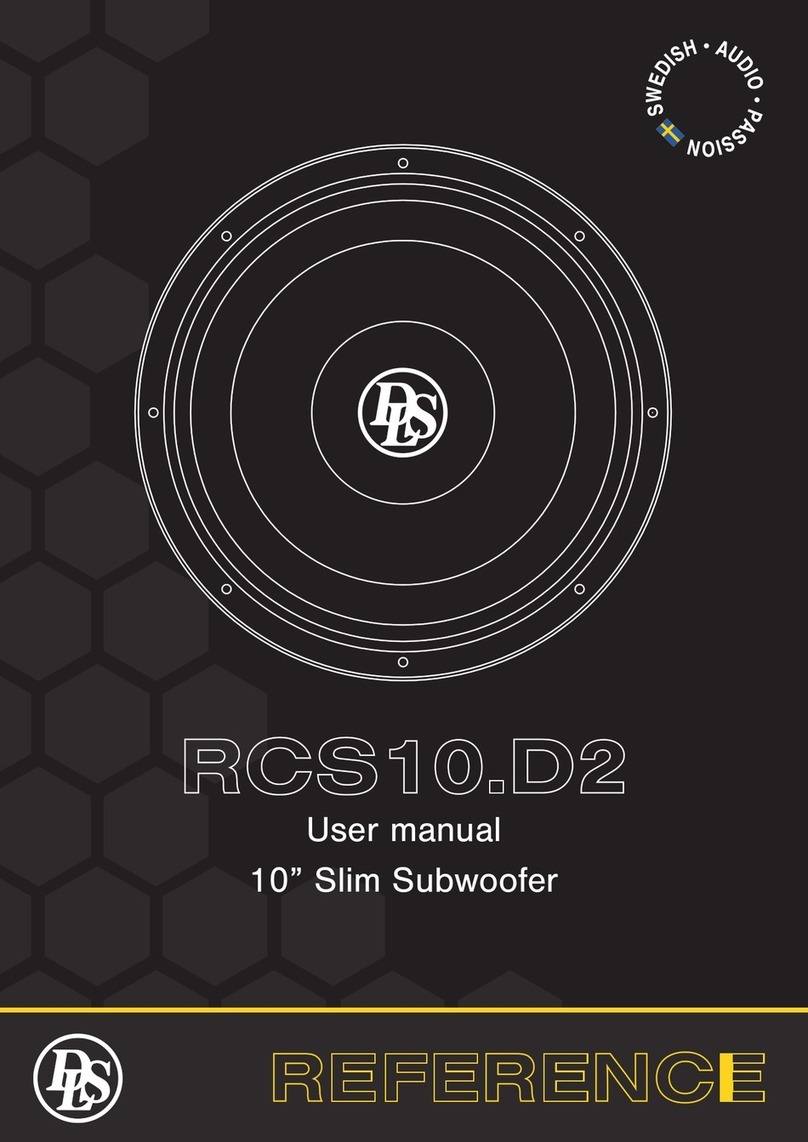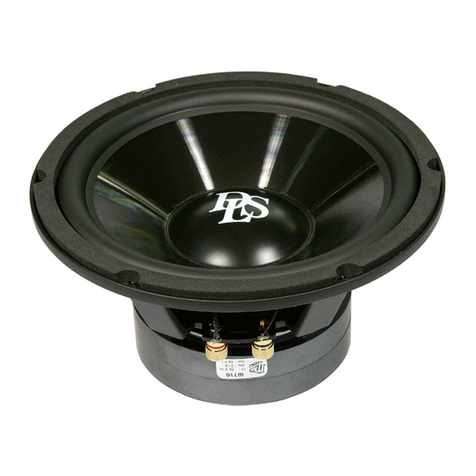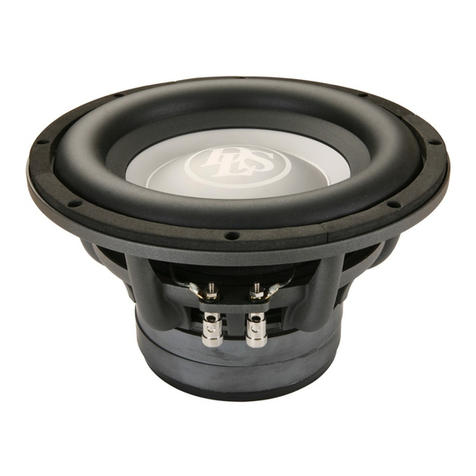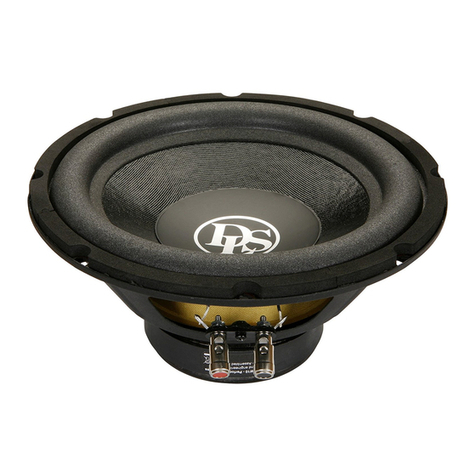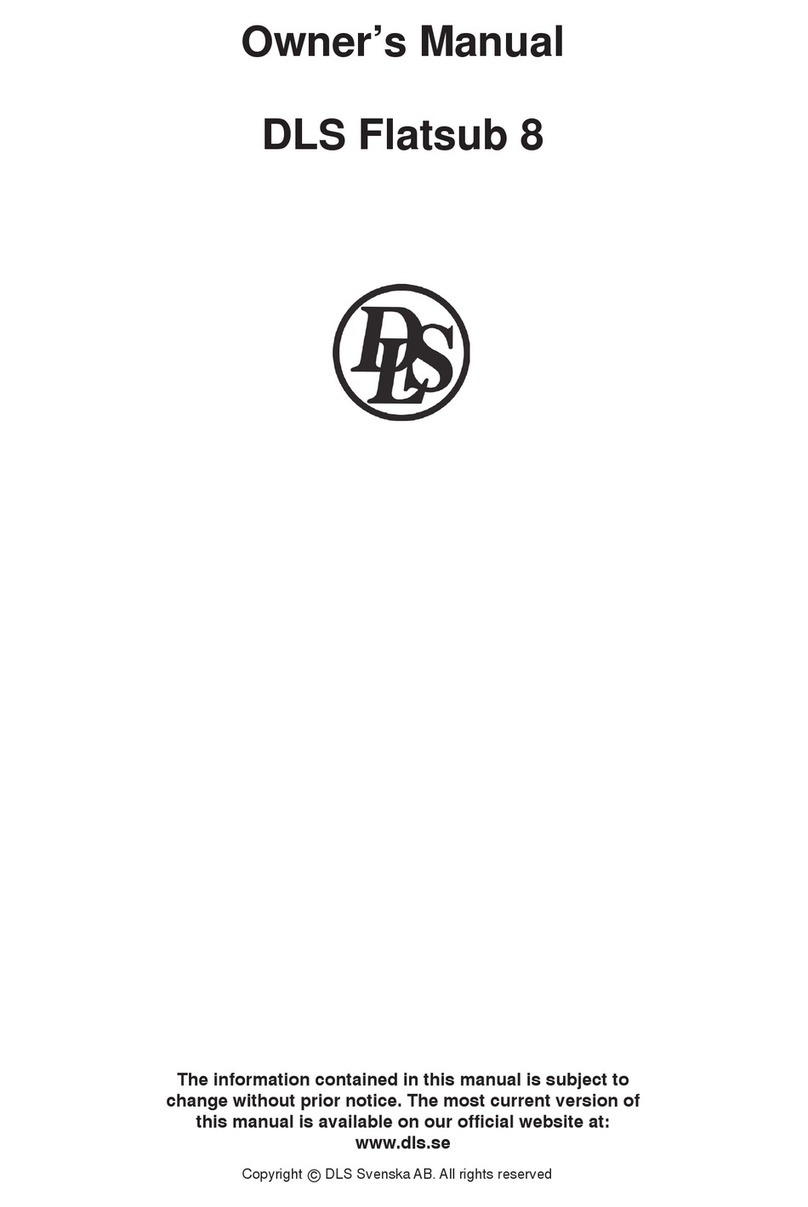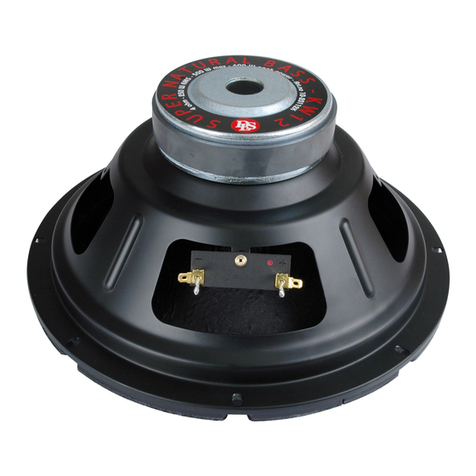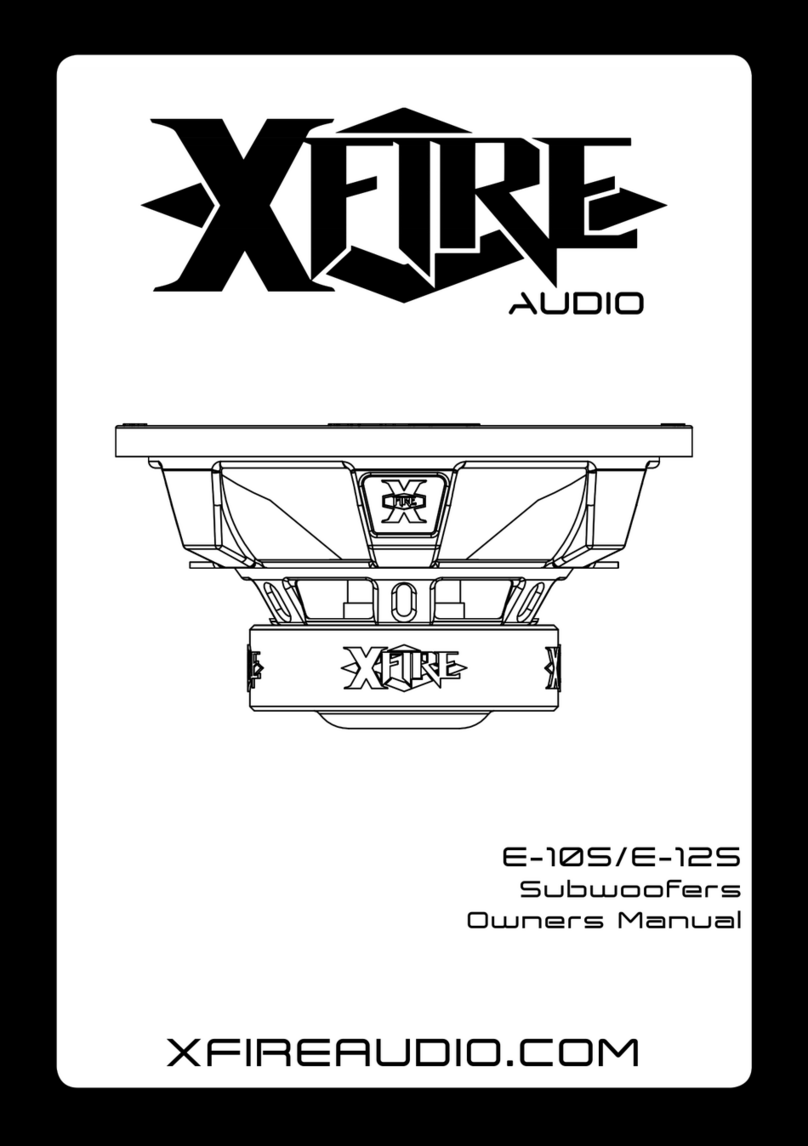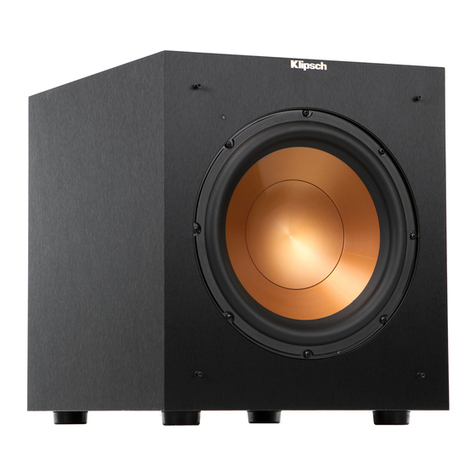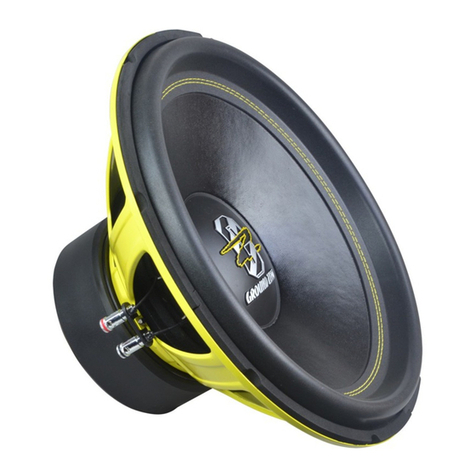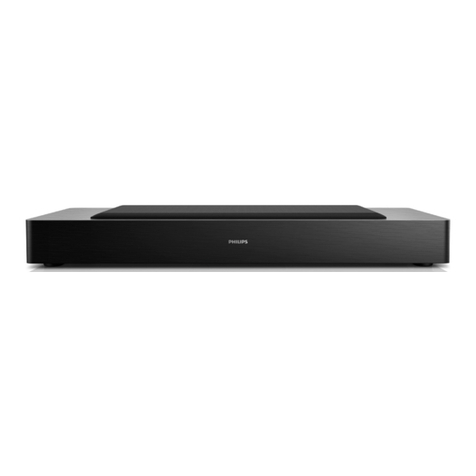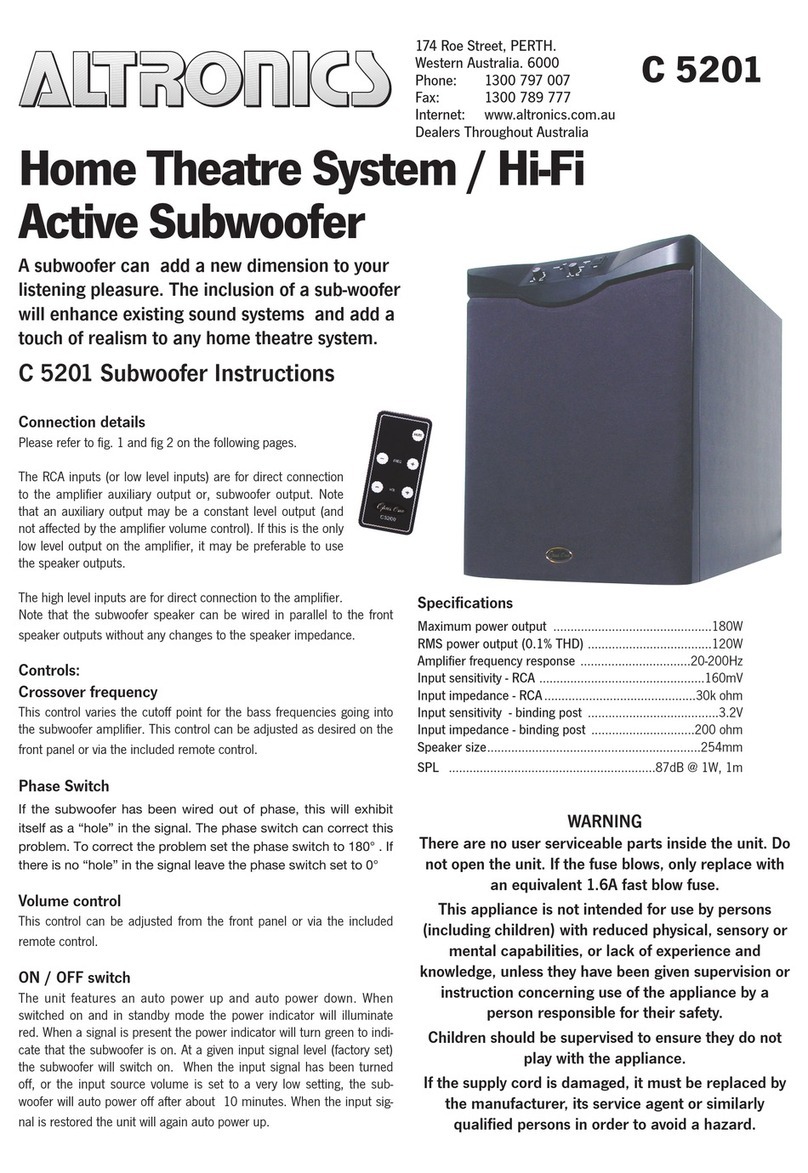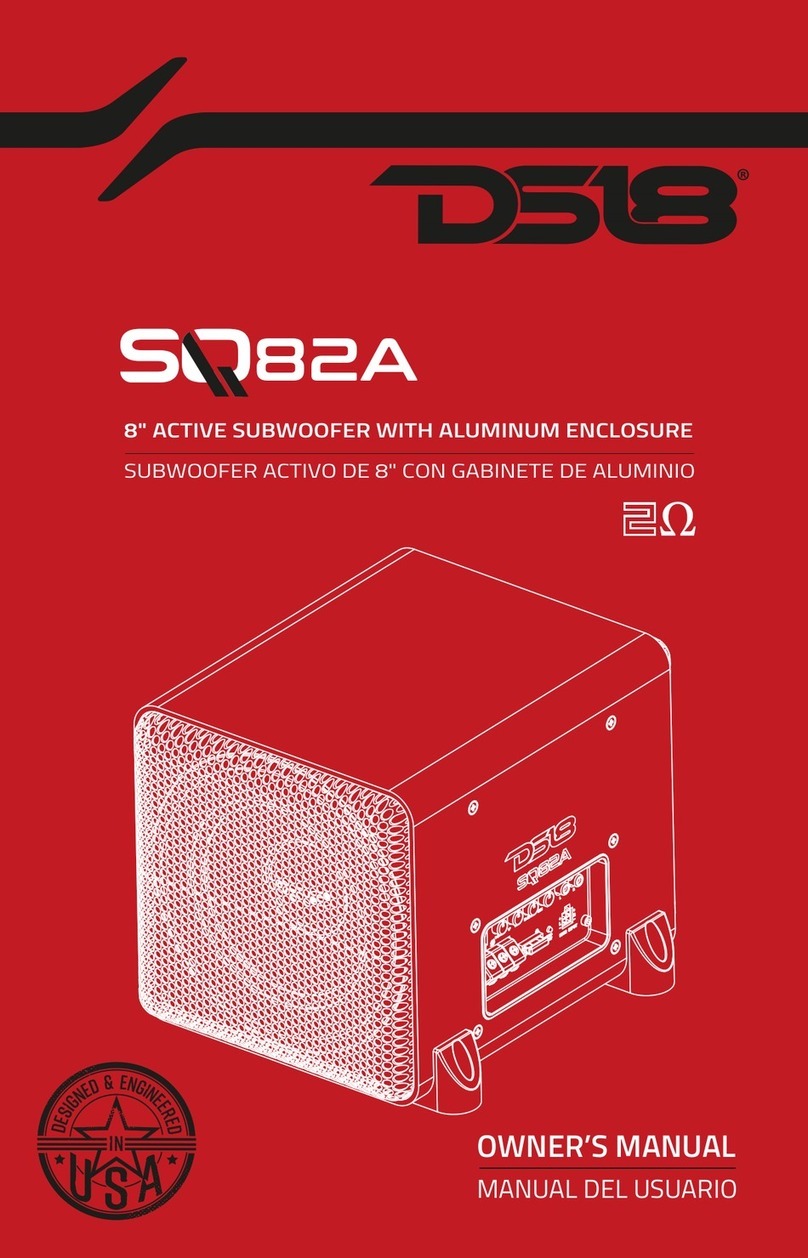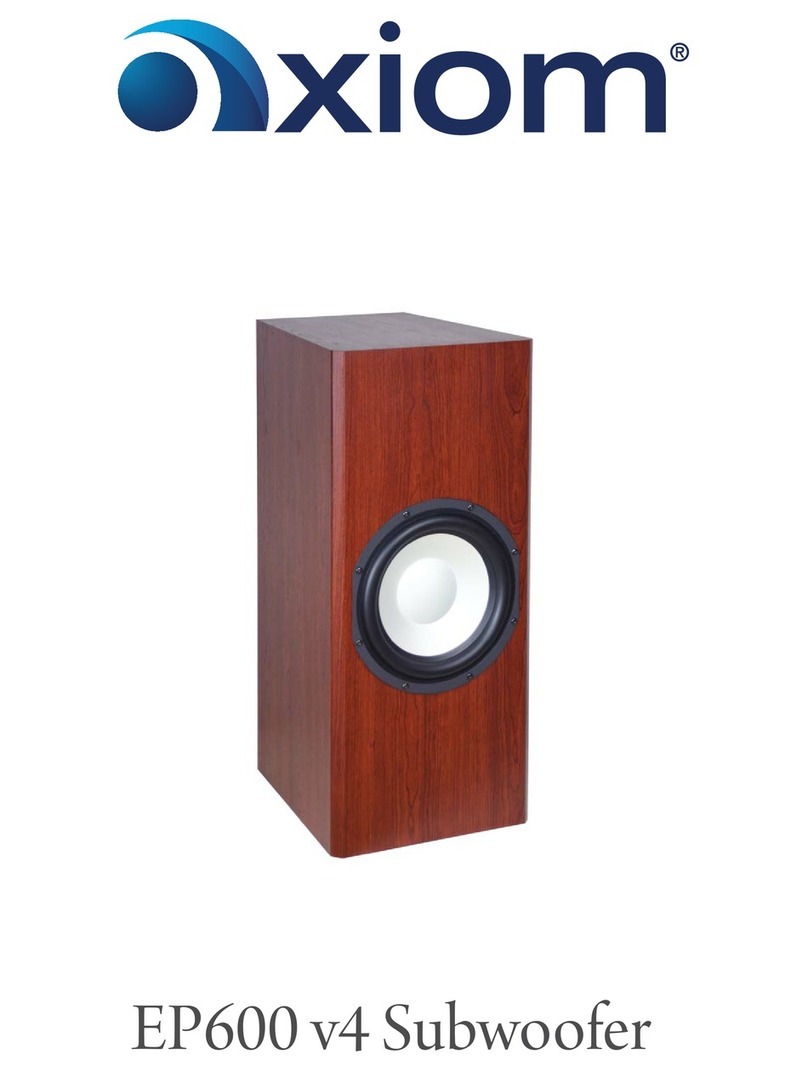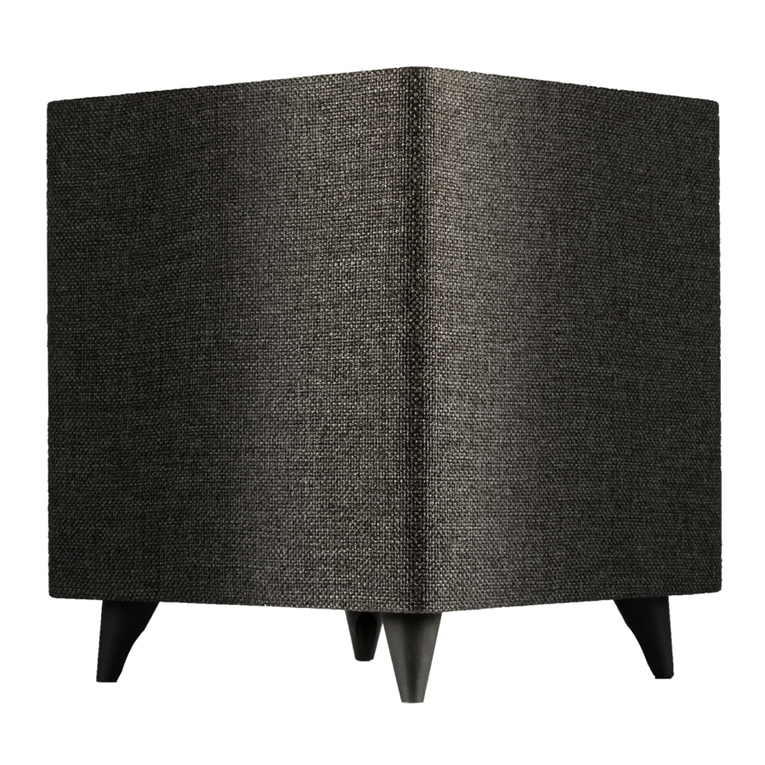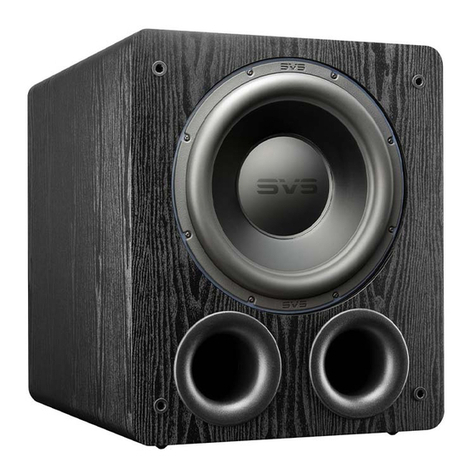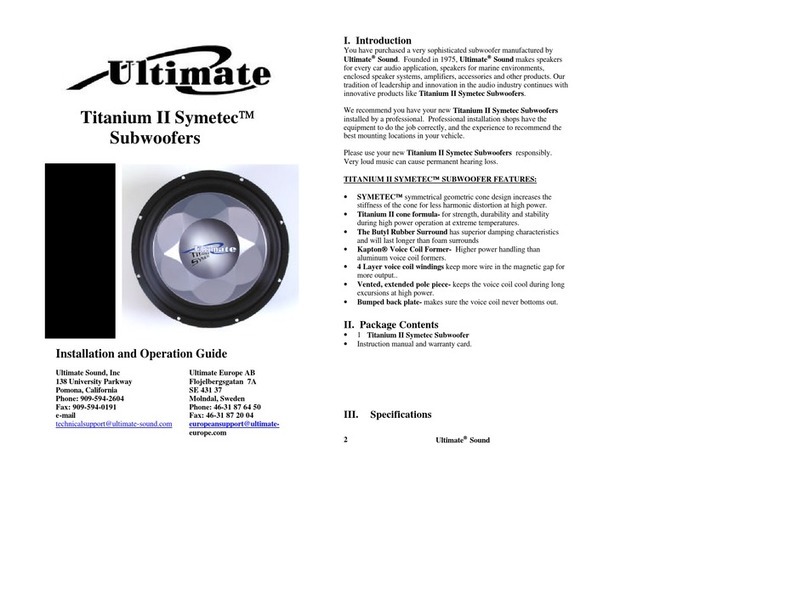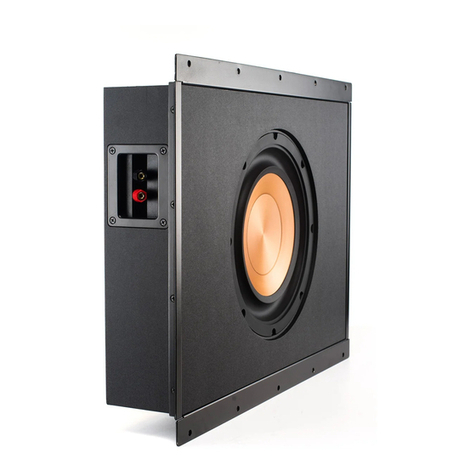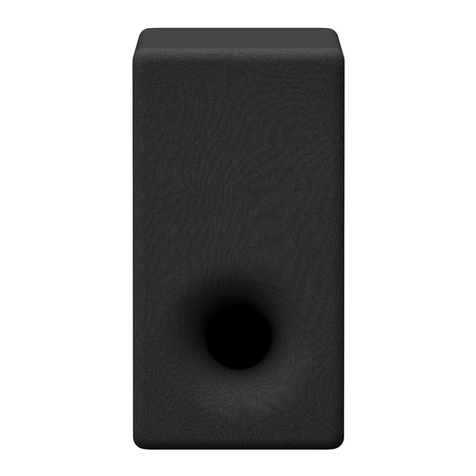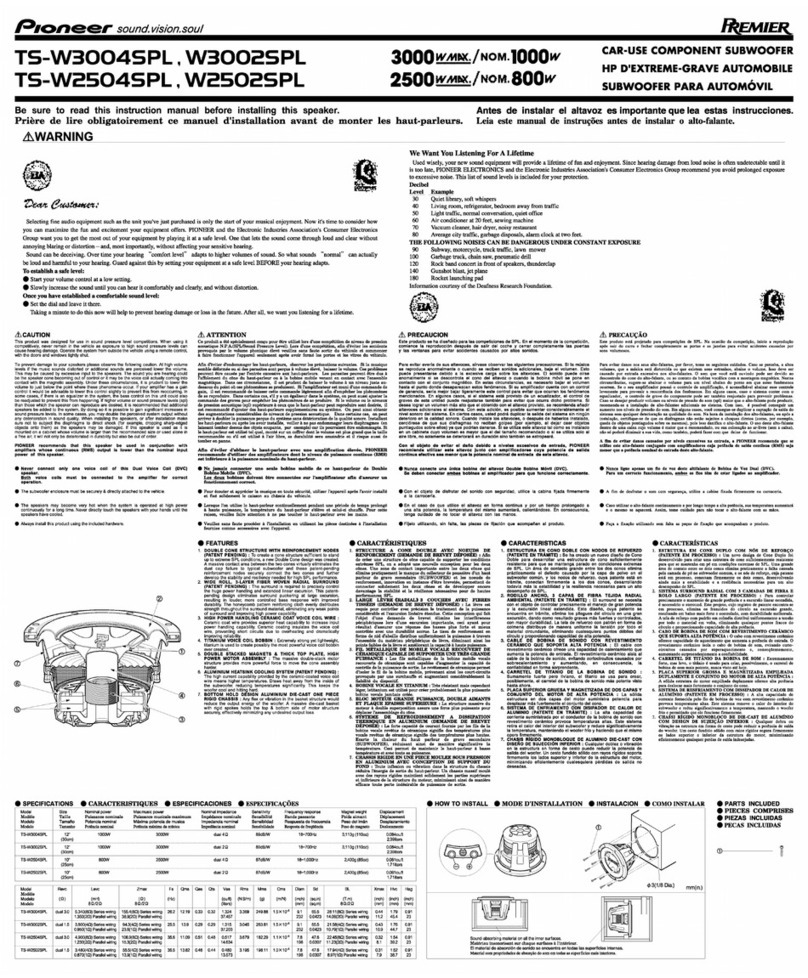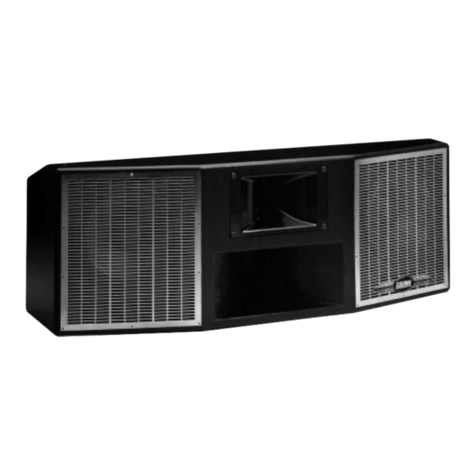DLS Reference ACW68 User manual

User manual
6”X 8” Active Slim Subwoofer

Content
Features
Installation
Troubleshooting testing
Professional tips
Product markings
Specifications
2
6
8
9
10
11
Welcome to DLS!
Thank you for buying a DLS Reference ACW68
active slim subwoofer. For us, it’s all about the sound
experience. We care deeply about sound and
construction quality. In order for your experience to
be as optimal as possible, it is important that you fully
read this manual, preferably before you start your
installation. Keep the manual in a safe and
accessible place for future reference.
Your subwoofer must be installed correctly in order to
work as intended. Make sure you have all necessary
tools nearby before starting and that you are
completely confident in how to process. If you feel the
slightest uncertainty; feel free to take the help of an
experienced installer or a car audio dealer.
Warranty
This subwoofer is covered by warranty, depending on
the conditions in the country where it is sold. If the
speaker is returned for service, please include the
original dated receipt with the product.
Winn Scandinavia AB
Elementvägen 15 - SE-702 27 Örebro - Sweden
www.dls.se
DLS speakers are engineered by DLS Sweden,
a part of:
Designed & Sound tuned in Sweden.
ACW68
DLS REFERENCE
DECLARATION OF CONFORMITY
DLS subwoofers for vehicles are manufactured in
accordance with the EU directive EEC 95/54
(72/245/ EEC) and are marked with the approval
number. They are also marked in accordance with
the WEEE-directive 2012/19/EC. The products are
also produced in accordance with the EU RoHS
directive 2015/863/EU.

Features
1. Power status Led
This bi-color LED glows green when power
is on and no problems are present. lf one of
the protection circuits comes on, it will
change to red.
2. Phase Shift
Use this switch to help compensate for time
alignment problems in the system. Such
problems usually result from having the
subwoofer at a different distance from the
listener than the other speakers in the
system.
3. Auto Turn On
The auto power on (ON/OFF) is for high
level (speaker-level) connections. When
the switch is in the ”ON” position, the
subwoofer auto power on when there is
signal input. If the amplifierdetect no signal
input, the amplifier will auto turn off. lf you
prefer to use the remote turn on/off connec-
tion, set the switch in the off position.
Note: Please connect the remote terminal
to the remote output of head unit as Fig.4.
When you turn on/off the head unit a receipt
pulse can be heard from the subwoofer.
4. Low Pass Filter
This control permits you define the frequen-
cy range you want the subwoofer amplifier
to receive. The subwoofer will reproduce all
sound BELOW the frequency you set.
Note: The low pass filter frequency can be
higher or lower than the visual scale
5. Bass Optimize
The Unique DLS Bass Optimize control
features a carefully Q-matched -6dB/+6dB
range to perfectly tune the bass response
when connecting to OEM factory radio. The
fixed bass boost in factory radios deteriora-
te bass musicality from additional subwoo-
fers because of the 50-60Hz bump in
factory radio output. With DLS Bass optimi-
ze control you can tune the low bass in your
car to an unrivalled natural bass.
2
13
5
11 10
7 92
6 84

Features
6. Input Gain Control
After you have installed your system, turn
this control to minimum.Turn the head unit
on (and the subwoofer willturn on via the
remote connection). Turn the head unit
volume to about 2/3 full level. Slowly turn
up the subwoofer input gain control until
you hear a small amount of distortion. Then
reduce the level until the distortion is
completely gone. Leave the control at this
setting.
7. Remote Level
Control Port
Attach the included remote level control to
control the volume level of the subwoofer
from the dashboard.
8. High Level input
If your head unit does not have RCA
outputs you can use the speaker outputs
for the audio source for the subwoofer. Use
the supplied cable and wire harness and
connect the outputs properly as shown in
the connection diagram.
9. Low Level input
Low level inputs are the recommended way
to input the audio signal to the subwoofer if
RCA outputs are present on your head unit
or other signal source (such as a sound
processor).
10. Fuse
11. Power Input
Terminal
3
13
5
11 10
7 92
6 84

Low Level Input Wiring
Low-level (RCA) input wiring is prefered for best audio performance. Most trunk or hatchback
installations will require a 15-20 feet RCA cable, while pickup trucks and under seat installations will
require a 6-12 feet RCA cable. Always use a high quality cable.
High Level Input Wiring
Most headunits are pre-installed from the car factory and have no RCA out-put, in this case you can
use the signal from the speaker output. Connect left and right speaker wires coming from the car
stereo to the high level input as shown. Be sure to observe polarity to avoid audio phase problems.
NOTE: Do not connect BOTH the high level and low level inputs from your receiver to your
amplifier at the same time.
4
WHITE L+ GREY R+
WHITE/BLACK L- GREY/BLACK R-
To Speaker Terminals
of head unit

NOTE: In this connection,
the AUTO TURN OFF switch
is in the ON position.
NOTE: In this connection,
the AUTO TURN ON switch
is in the OFF position.
5
Power Terminal
Connect to a good chassis ground. The ground connection should be clean, unpainted metal to
provide a good electrical connection. Use a wire brush, a scraper or a piece of an abrasive sheet to
clean the metal.
Remote Terminal
Connect the remote terminal to the remote output of the head unit. This turns on the amplifier
whenever the car stereo is turned on
Ground Terminal
Connect the fuse holder as close to the vehicle battery + as possible and connect the cabel on the
rear panel on the subwoofer.Use a ring crimp terminal connector to battery.
Chassi
ground point
Chassi
ground point
To Remote Turn on
terminal of head unit

Installation
Under the seat
We include a fixing kit to ensure the
subwoofer remains securely mounted. Two
types of installation are possible.
1. The seat must be positioned in its
normal fixed position.
2. Decide the best location possible that
suits your automobile and space
available, checking that the enclosure
doesn’t restrict the seat mobility. (See
Figure 1)
3. Ensure the area for subwoofer location
is clean and tidy. Any loose objects
must be removed.
4. Once the location has been decided,
mark the screw hole positions for the
fixing brackets.
5. Drill holes of 2 mm for the 4 fixing
brackets, at your defined locations.
6. Fix the clamps to the subwoofer case
with the four screws M6*8 (the fixing
clamps have a mounting direction
system) see (Figure 2 & 3)
7. Position the subwoofer so that the holes
correspond to the metal supplied
screws and fix it. (Figure 4)
8. Please make sure the subwoofer
enclosure is tightly fixed.
6
25 mm
supplied
screws
Pre drilled
mounting
hole
4 mounting
tabs
4 screws
M6*8
Figure 2
Figure 3
Figure 4
Figure 1

7
Installation
In the trunk
We include a fixing kit to ensure the
subwoofer remains securely mounted. Two
types of installation are possible.
1. Rear seats must be positioned in their
normal fixed position.
2. Decide the best location possible that
suits your automobile and space
available. The best and most secure
location for optimum sound quality is
behind the rear seats,in the trunk floor
(see Figure 1 ).
3. Ensure the area for subwoofer location
is clean and tidy. Any loose objects
must be removed, as they could knock
and damage the subwoofer.
4. Once the location has been decided,
mark the screw hole positions for the
fixing brackets.
5. Drill holes of 2 mm for the 4 fixing
brackets, at your defined locations.
6. Fix the clamps to the subwoofer case
with the four screws M6*8 (the fixing
clamps have a mounting direction
system) see (Figure 2 & 3)
25 mm
supplied
screws
Pre drilled
mounting
hole
4 mounting
tabs
4 screws
M6*8
Figure 2
Figure 3
Figure 4
Figure 1

8
Troubleshooting testing
lf you experience operation or performance problems with this product, compare your installation
with the electrical wiring diagram on the previous pages. lf problems persist, read the following
troubleshooting tips which may help eliminate the problems.
Amplifier will not
power up.
Check to make sure you have a good ground connection.
Check that the Remote lnput {Turn-On) has at least 5VDC.
Check that there is battery power on the (+) terminal.
Check that there is at least 12v.
Check all fuse, replace if necessary.
Make sure that the Protection LED is not illuminated. lf it is lit, shut off the
amplifier briefly, and then repower it.
Protection LED
comes on when
amplifier is
powered up.
Check for short circuits on speaker leads.
Turn down the volume control on the head unit to prevent overdriving. Remote
speaker leads, and reset the amplifier. lf the Protection LED still comes on, then
the amplifier is faulty and needs servicing.
Engine noise
(static type).
This is usually caused by poor quality RCA cables, which can pick up radiated
noise. Use only the best quality cables, and route them away from power
cables.
Engine noise
(alternator whine).
Check that the RCA grounds are not shorted to the vehicle chassis Check that
the head unit is properly grounded.
Amplifier gets very
hot.
Check that there is good air circulation around the amp. In same applications, it
may be necessary to add and external cooling fan.
No output. Check that all fuses are OK.
Check that unit is properly grounded.
Check that the Remote lnput {Turn-On) has at least 5VDC.
Check that the RCA audio cables are plugged in to the proper inputs.
Check all speaker wiring.
Low output. Reset the Level control.
Check the crossover control settings.
High hiss in the
sound.
Disconnect all RCA inputs to the power sub’s control panel. lf the hiss
disappears, then plug in the component driving the amplifier and unplug its
inputs. if the hiss disappears at this point, go on until the faulty noisy compo-
nent is found. It is best to set the amplifier’s input level control as low as
possible. The best subjective signal-to-noise ratio is achieved in this manner.
Try to set the head unit as high as possible

NOISE PROBLEMS
WHINING NOISE VARYING WITH
ENGINE REVOLUTIONS:
Do this:
1. Rewire the power supply (12 V) to source
unit direct from battery.
2. Rewire ground wire from source unit to
clean position on chassis.
3. Check all power connections to ensure
that they are clean and tight.
4. Check quality of system ground connec-
tion.
5. Install a Power Cap capacitor. This can be
helpful against most noise problems.
CONSTANT WHINING NOISE:
Do this:
1. Ensure that all equipment has a common
ground point.
2. Check quality of earth strap connection
from battery negative terminal to chassis.
3. Disconnect signal cables from amplifier to
see if noise disappears. If so the leads are
picking up noise. Test this by laying a new
cable over the seats and reconnecting to
the amplifier. If the noise does not return,
re- route original cable away from source
of interference.If noise remains regardless
of cable position, try to use so called
Quasi-balanced signal cables. DLS
PRO-cables are Quasi-balanced.
INSTALLING IN TRUNK
When installing the amplifier in the trunk, run
the power wires along the same path as the
other vehicle wiring. Many cars have insulated
channels for wiring. you will have to remove
the door sill trim and the carpet.
SPEAKERS AND POWER WIRES
Do not run speaker and power wires next to
each other. Power wires can generate a
”siren” sound in the speakers. Run speaker
and power wires on opposite sides of the car.
SPEAKER POLARITY CHECK
All speakers in a car audio system should be
connected in phase (the same polarity). All
speaker cones must move in the same
direction. Out of phase speakers will cause a
lack of bass, and a poor stereo soundstage.
Checking polarity:
Hold the connection of the speaker wire to
the terminal of a 1,5 Volt flashlight battery.
Tap the + wire on to the + terminal of the
battery, and observe the movement of the
cone. The cone should move outwards when
the wire touches the battery, and inwards
when the battery is removed. If it is the other
way around, the speaker has been
connected backwards and it must be
removed and connected correctly. If your
system also has a subwoofer connected
through a passive 6 or 12 dB crossover, try
to connect this with various polarity and
judge what sounds best. The phase shift in
passive crossovers sometimes makes it
necessary to change polarity.
NOTE! Tweeters can not be tested this way,
double check the connections instead.
9
Professional tips
+
-
+
-
Battery
1,5 Volt

The crossed-out wheelie bin symbol means that the product, literature and pac-
kaging included must be taken to separate collection at the end of their working
life. Do not dispose of these products as unsorted municipal waste: take them
for recycling. For info on your nearest recycling point, check with your local
waste authority.
This product has been granted with the CE certification mark to show that the
product follows the health, safety, and environmental protection standards for
products sold within the European Economic Area (EEA).
DLS products complies with the relevant provisions of the RoHS
Directive for the European Union. In common with all Electrical
and Electronic Equipment (EEE) the product should not be
disposed of as household waste. Alternative arrangements may
apply in other jurisdictions.
aideMeliboMnaeporuEehtforentraplabolgasiSLD
Association, an organisation that focus on promoting the
custom made mobile media installations to consumers.
Product markings
We follow a policy of continuous advancement in development. For this reason all or part of
specifications & designs may be changed without prior notice. We reserve for possible typos,
factual or numeric errors that may have been printed on any products, package designs,
user manuals and/or other included accessories.
10

Specifications
MODEL
Power
THD
Signal-to-noise ratio
Frequency response
Input sensitivity, high level
Input sensitivity, low level
Low Pass Filter
Bass Optimize
Subsonic Filter
Fuse rating
Subwoofer
Dimensions (LxWxH) inches/mm
We follow a policy of continous advancement in development. For this reason all
or part of specifications and designs may be changed without prior notice.
DLS ACW68
120 W RMS / 250 W max
Max <0.4 %
>90 dB
30 Hz-150 Hz
0.9 V
300 mV
50 Hz-150 Hz
-6 dB / +6 dB
30 Hz
15 A
6x8 inch, 2 ohm
11.4”/289,6 x 8.3”/209,6 x 2.9”/72,5
Table of contents
Other DLS Subwoofer manuals
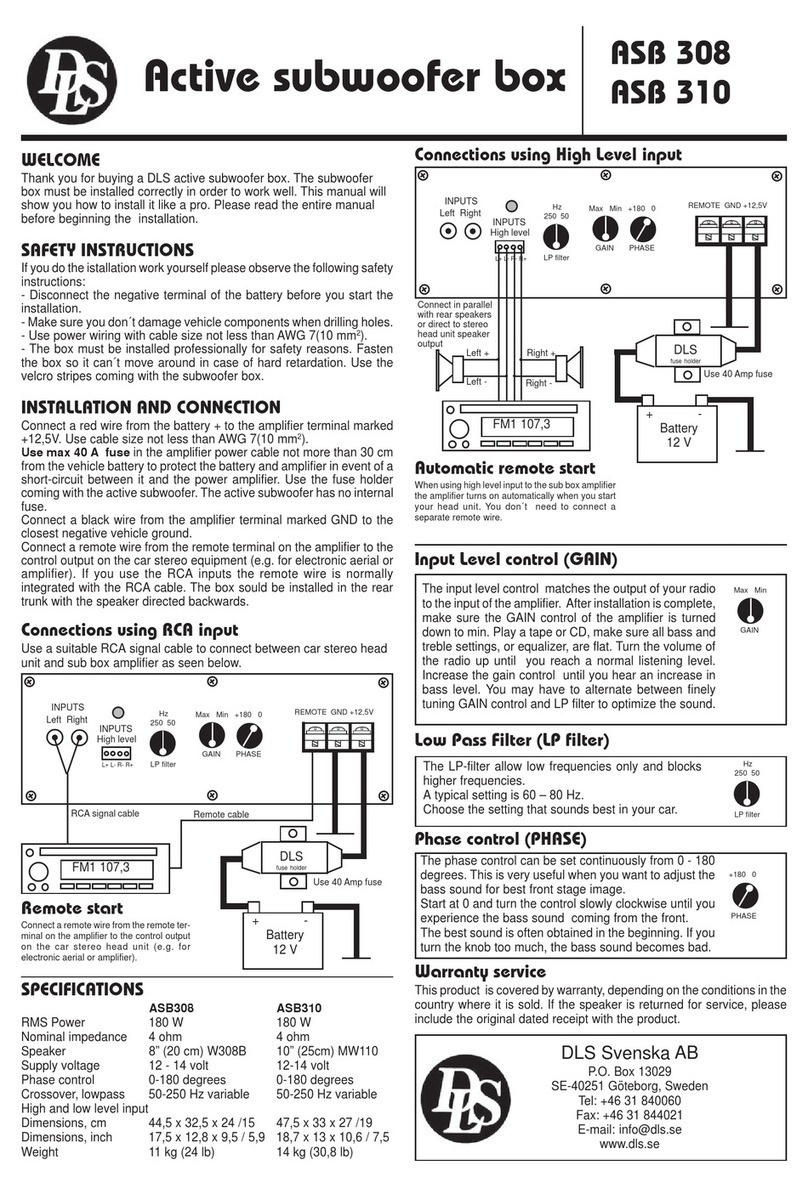
DLS
DLS ASB 308 Installation instructions
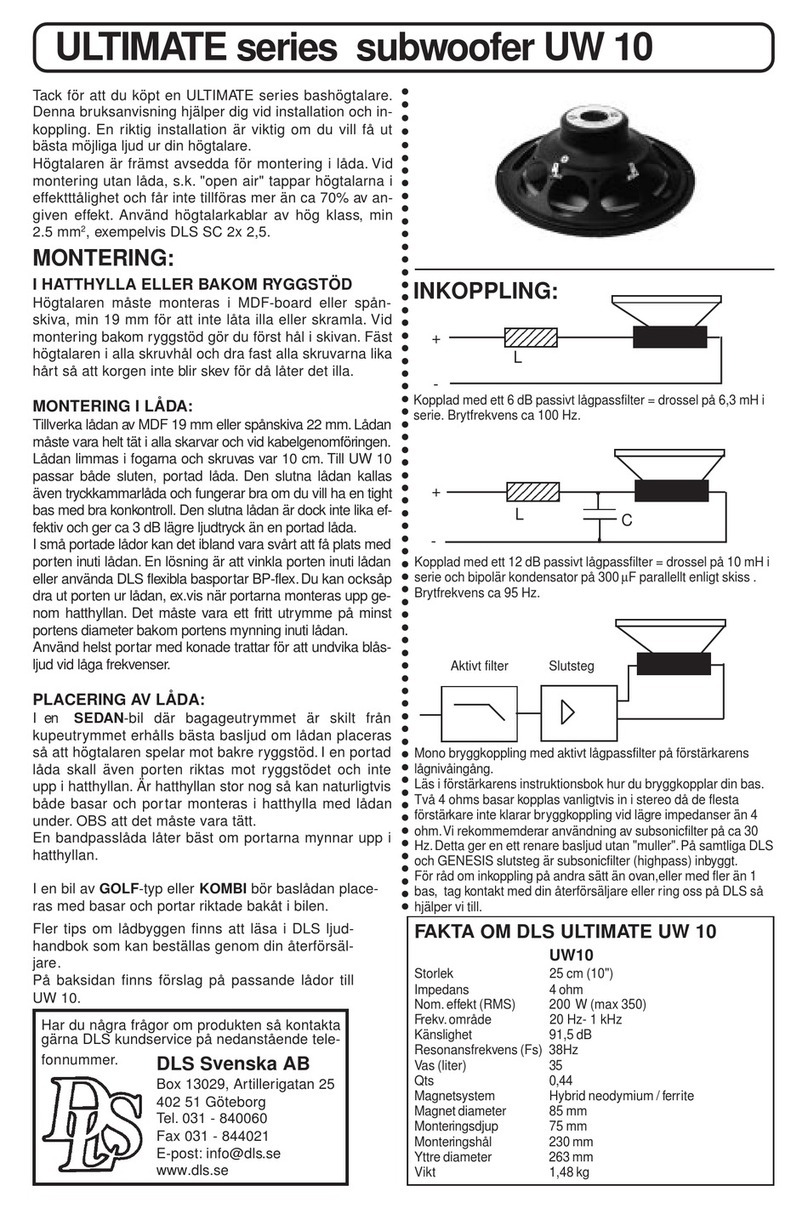
DLS
DLS BRUXUW10 User manual

DLS
DLS RULTSUB3 User manual
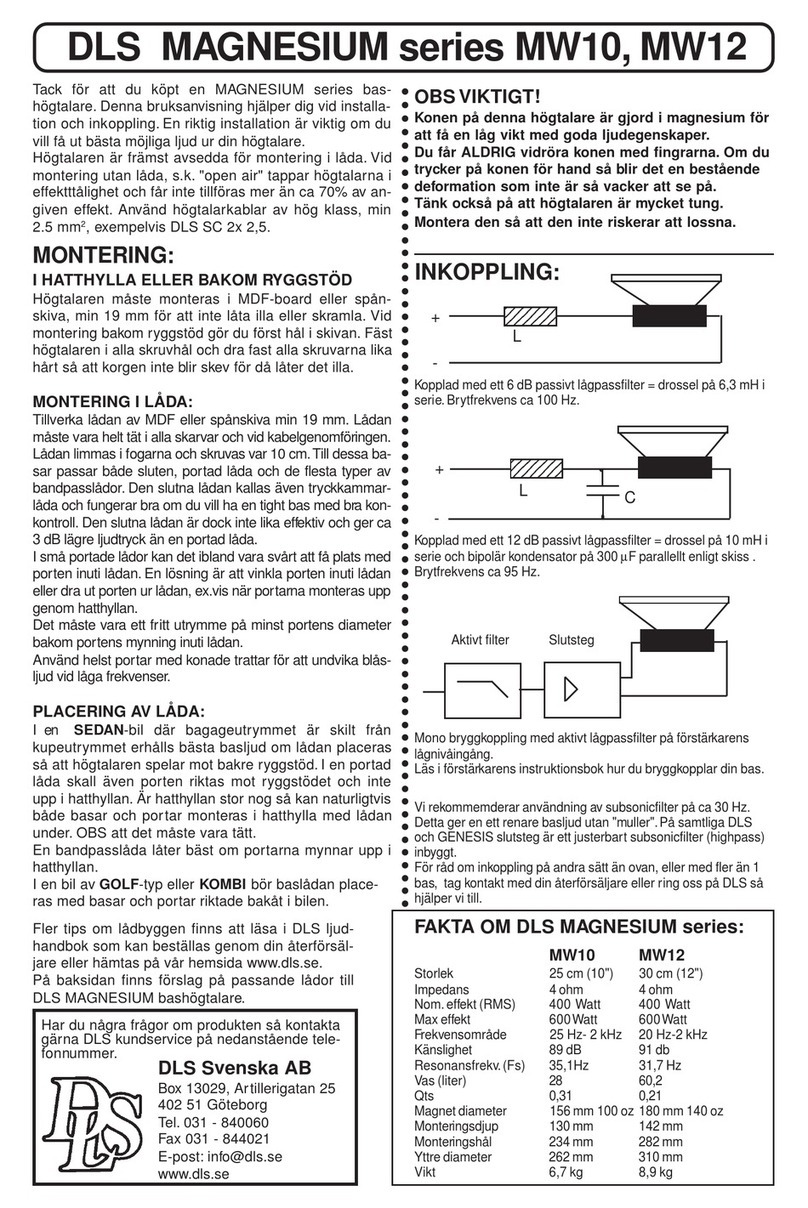
DLS
DLS Magnesium MW10 User manual
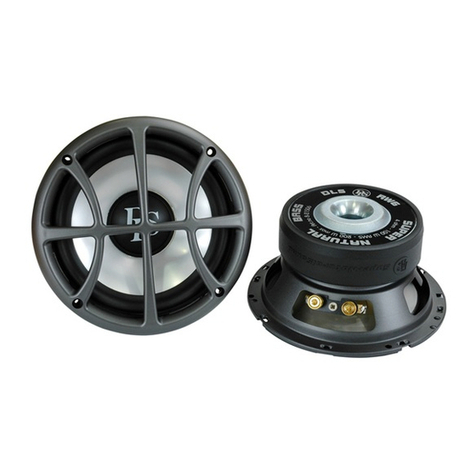
DLS
DLS REFERENCE RW6 User manual
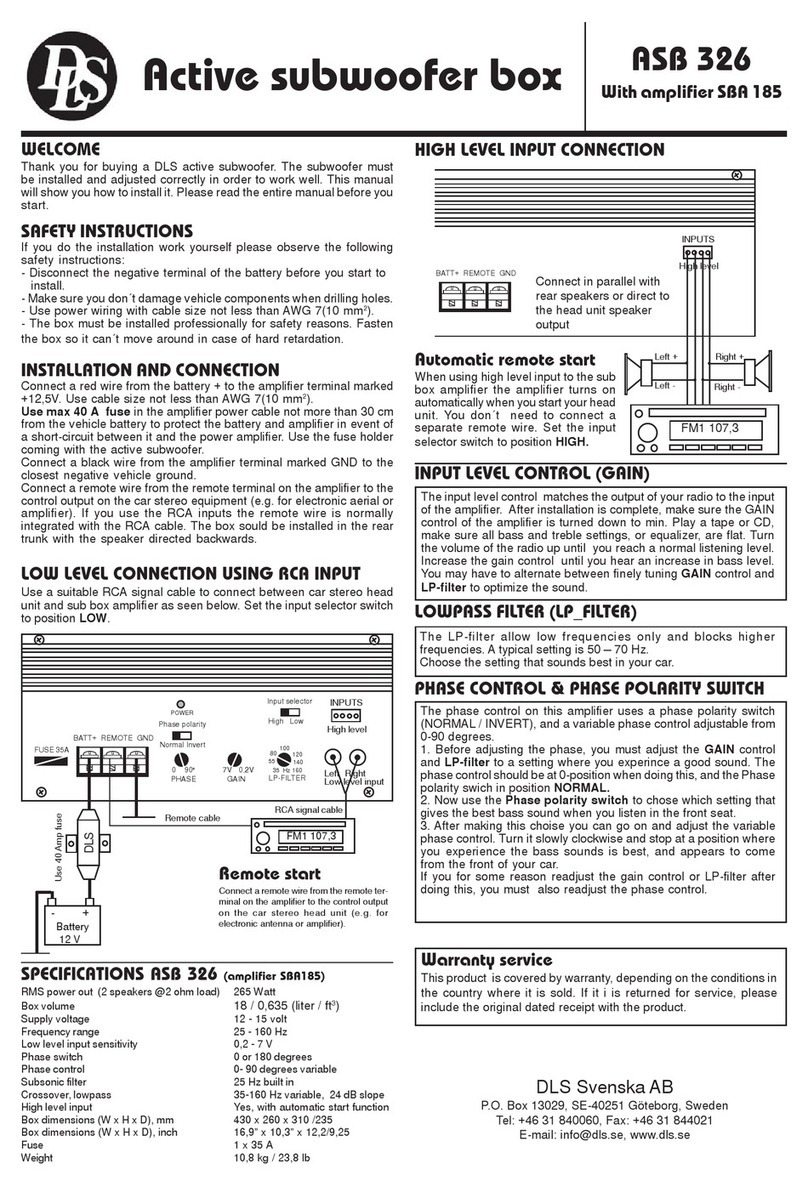
DLS
DLS ASB 326 User manual

DLS
DLS PERFORMANCE PS10 User manual
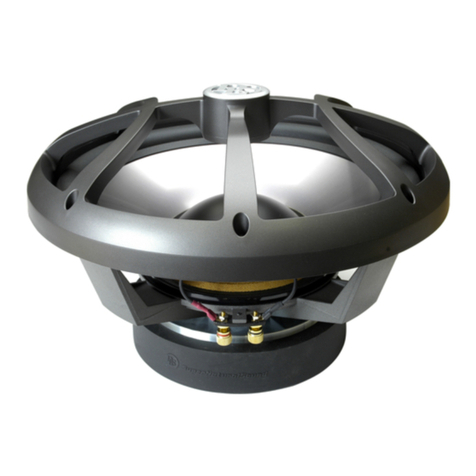
DLS
DLS Nobelium 10i User manual

DLS
DLS MR10D User manual
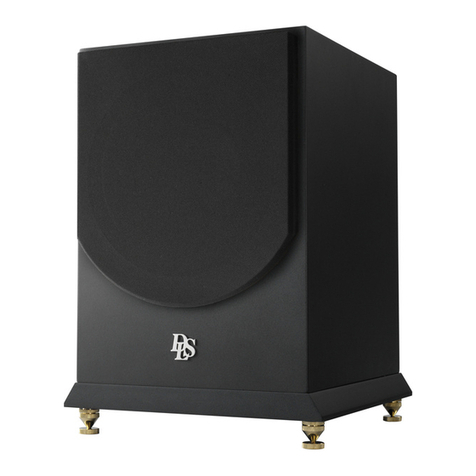
DLS
DLS Sub 3.10 User manual
